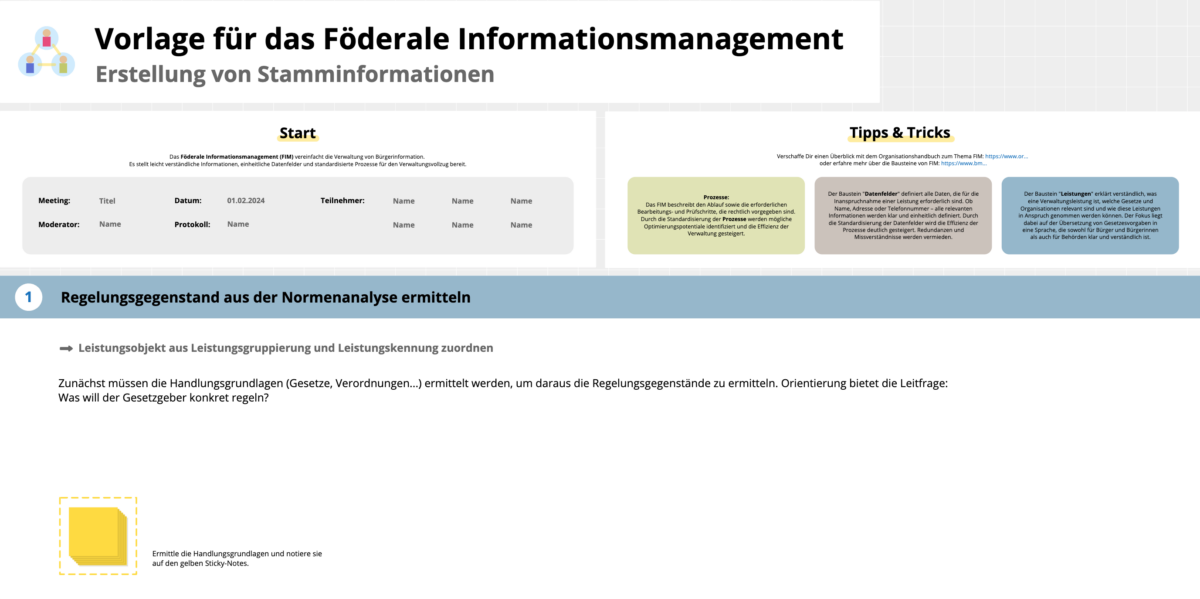OZG 2.0: The future of digital administration in Germany is FIM
A central element of the OZG 2.0 is the Federal Information Management (FIM). FIM serves to develop and provide comprehensible citizen information, uniform data fields for forms and standardised processes for administrative services.

Since its introduction in 2017, the Online Access Act (OZG) has aimed to make it easier for citizens and companies to access administrative services and make them available digitally. With the OZG 2.0, the next stage in the digitalisation of public administration is now in the starting blocks. In addition to technological innovations, this also brings a clever tool that makes the transition to digital administration even more efficient and user-friendly: Federal Information Management (FIM).
The vision of the OZG 2.0
The original OZG set the framework for the digitalisation of administrative services. It obliged the federal government, federal states and local authorities to offer all services digitally via corresponding administrative portals by the end of 2022. Despite major progress, however, it became clear that realising the ambitious goals would require more time, an improved strategy and the right project management tools.
The OZG 2.0 addresses these weaknesses and adds new priorities to the previous goals:
- increasing efficiency: The further development of digital infrastructures will make administrative processes more efficient and user-friendly.
- expanding the range of services: In addition to the services already digitalised, further services are to be made available online.
- maximum security and data protection: As digitalisation increases, so does the importance of IT security and data protection, which are given even greater consideration in OZG 2.0.
The role of FIM in OZG 2.0
A central element of the OZG 2.0 is the Federal Information Management (FIM). FIM serves to develop and provide comprehensible citizen information, uniform data fields for forms and standardised processes for administrative services. With the help of FIM, the translation and implementation costs of legal requirements can be significantly reduced. To support the implementation of digital administrative processes, Conceptboard has developed a template for Federal Information Management together with Lindner Consult: the FIM template.
What is the Conceptboard FIM template?
The FIM template provides a standardised format that bundles together all the information and step-by-step instructions for the provision of administrative services. It contains:
- Processes: From identifying the administrative service to process creation, the template provides detailed outlines required to provide an administrative service.
- Data fields: Support for the standardised specification of the required data fields and their structure.
- Legal provisions: References to the legal basis and requirements for the respective administrative service.

This standardisation ensures that administrative services can be provided uniformly and comprehensibly throughout Germany.
Advantages of the FIM template
The FIM template has a number of advantages that contribute significantly to the success of OZG 2.0:
- standardisation and interoperability: the uniform structuring of information and processes significantly improves interoperability and collaboration between different administrative levels and areas. This not only facilitates the integration of new digital solutions, but also the exchange of data.
- efficiency and cost savings: standardised processes and data sets make it possible to digitise administrative services faster and more cost-effectively.
- user-friendliness: A standardised structure of digital administrative services ensures greater user-friendliness. Citizens and companies benefit from clearly structured processes and comprehensible information offerings.
- faster implementation: With the ready-made template, digital administrative services can be developed and provided more quickly. This is particularly beneficial in times of the pandemic and the growing demand for digital solutions.
- quality assurance: The FIM template also contains references to legal regulations and requirements. This helps to ensure that digital administrative services comply with legal requirements and are therefore legally compliant.
Practical examples for the application
To make the advantages of the FIM template more tangible, it is worth having a look at specific use cases:
Example 1: Online registration of commercial enterprises
By using the FIM template, the process steps can be clearly defined and standardised. As a result, business registrations can now be carried out online in a standardised and efficient manner throughout Germany. This saves companies time and effort, while administrations benefit from the reduced processing time.
Example 2: Digital building permits
The complex requirements and processes are simplified by standardised data records and process descriptions. This not only shortens processing times, but also increases the transparency and traceability of approval procedures.
Try Conceptboard’s Federal Information Management template now and find out how you can improve your administrative performance.
Challenges and outlook
Despite the many benefits and advances, there are also challenges that need to be overcome in the context of the OZG 2.0 and the use of the FIM template:
- Adaptation of existing systems: Many administrations are still working with outdated IT systems that are not easily compatible with the new standards. Investments and training are necessary here to make the changeover a success.
- Acceptance and participation: The successful implementation of OZG 2.0 also depends on the acceptance and active participation of all stakeholders. Close cooperation between the federal government, federal states and local authorities as well as the involvement of citizens and companies is required.
- Continuous further development: Digitalisation is an ongoing process. It is therefore important that the FIM templates are regularly reviewed and adapted to new technological and legal developments.
Efficient and citizen-friendly: OZG 2.0 and FIM create the basis for future-proof administration
The OZG 2.0 and the FIM mark a significant step towards a modern, efficient and citizen-friendly administration in Germany. The standardisation of processes and data records not only increases the efficiency and quality of administrative services, but also lays the foundation for future-proof digitalisation. Despite the initial challenges, the FIM template offers a solid basis on which the vision of a fully digitalised administration can become a reality. The coming years will show how well this vision can be put into practice and how the digital transformation of public administration can be driven forward.
You can find more information on this topic here.

